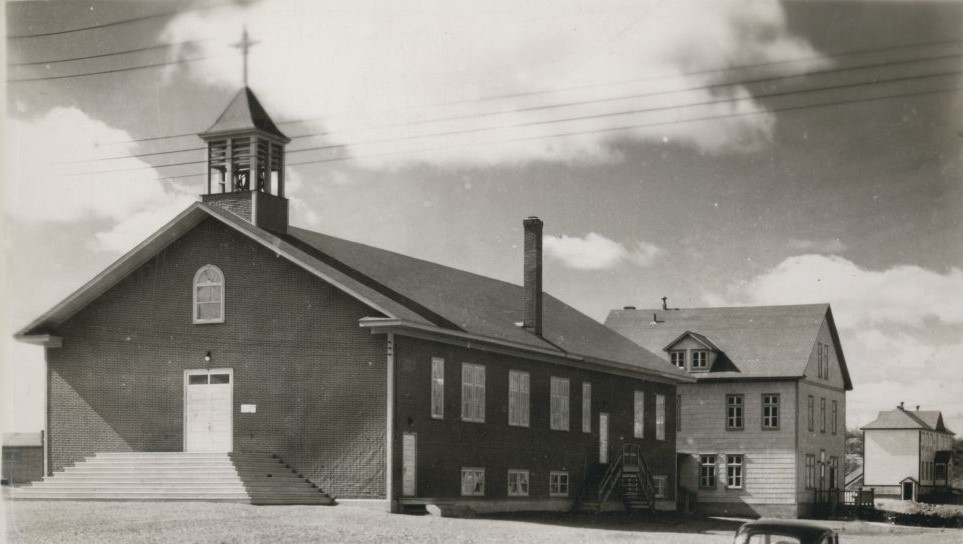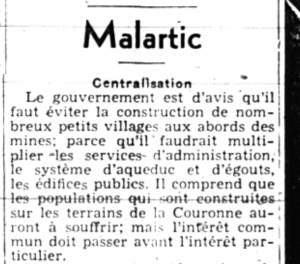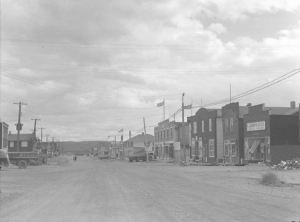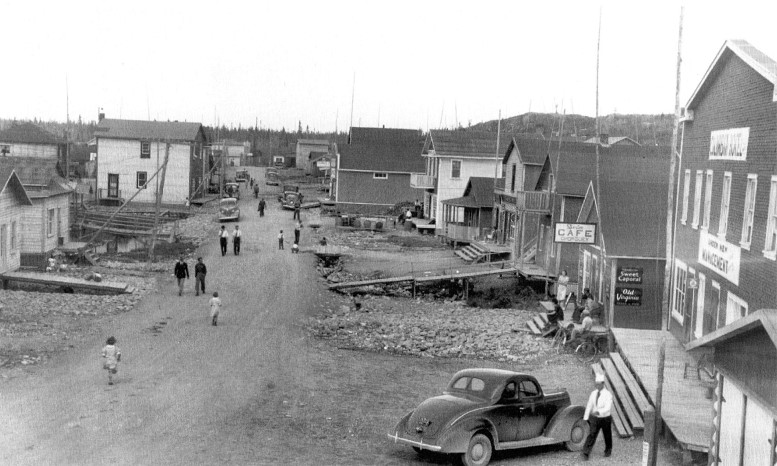A Dangerous Precedent

Church of the Immaculate Conception in Rouyn-Sud between 1930 and 1960 (BAnQ, Rosemont-La-Petite-Patrie, Postcards, 4743968).

Article dealing with the government’s intention to put an end to squatting in Abitibi (La Frontière, August 28 1938, p. 4).
Roc-d´Or was not the only squatter village in Abitibi. Across the new mining region, people had settled on land they did not own. In the second half of the 1930s, the Quebec government launched a strong offensive. It aimed to curb the widespread phenomenon of squatting.
The Report of the Inquiry on Roc-d’Or documents the Government’s position. It read, “it would be regrettable if what happened in the case of Rouyn-Sud repeated itself in the case of Roc-d’Or.” Since 1932, over 200 squatter families had lived in Rouyn-Sud, on the outskirts of Rouyn. The Quebec government considered incorporating it into a distinct municipality. But, in the spring of 1940, decision-makers opted instead for annexation to Rouyn. Rouyn-Sud’s “bankruptcy was inevitable given its minimal assessment value.” It turned out to be very expensive. Émile Morin, Deputy Minister of Municipal Affairs, said it was a mistake. He thought “that it would be unfortunate if the Rouyn-Sud situation replicated in Roc-d’Or”.

Main street of Lapa-Cadillac in 1939 (BAnQ Rouyn-Noranda, Ministère des Ressources naturelles fonds).
The Quebec government was reluctant to incorporate or annex Roc-d’Or for fear of creating a precedent. Other squatter settlements could demand similar treatment. The Roc-d’Or Inquiry Report points out “the eyes of many other squatter settlements are on Roc-d’Or. For instance, Perron, Petit Buckingham, Rivière Thompson. And, Lac Révillart, Petit Québec (Lapa-Cadillac), and Petit Canada. Not to mention smaller groups and individual squatters who look to Roc-d’Or.”


